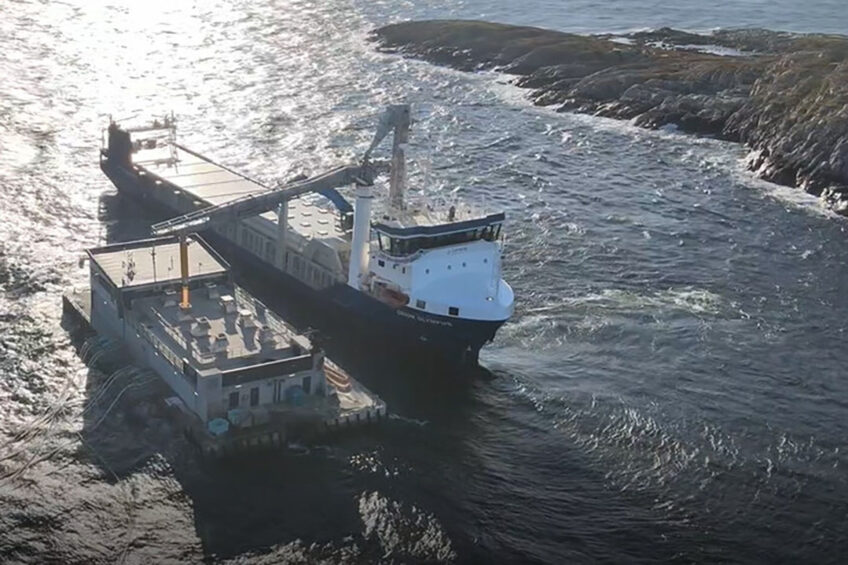Optimal fish feed handling

Why ‘gentle’ handling by design matters in order to minimise environmental impact – a look back and ahead at how pellets are moved.
Gentle handling of feed pellets for any livestock type, including the aquaculture industry, is critical in order to reduce waste – and the evolution of handling equipment continues to progress in order to make more efficiency gains.
Jeppe Bergmann Rasmussen, CEO and administrator director at FM Bulk Handling in Denmark, explains that proper handling prevents waste in the form of broken pellets and dust that is not eaten by fish but rather sinks to the bottom of aquaculture tanks. This disintegrates and adds to the nutrients in a fish farm’s wastewater that come from fish excrement.
Losing nutrients to feed waste is costly
Losing nutrients to feed waste is unnecessary, costly, and adds a greater environmental burden to fish farm operations. That’s why companies such as FM Bulk Handling have worked hard to improve their equipment designs. For example, their systems can save about 80% of the waste that a normal conveying system generates, says Rasmussen. “This means that all the energy that goes into the creation of aquaculture pellets, all the energy in the form of heat and electricity in the processing and all the fuel that’s used in transportation that it takes for every pellet to get to the fish is not wasted,” he says. “As already mentioned, it also means that very little feed waste goes into the wastewater of aquaculture operations. It is all about making sure the fish feed pellets are conveyed as easily and steadily as possible and not to ‘stress’ the pellets.”
From bags to bulk supply
Rasmussen also explains that in the last few years the handling of fish feed pellets has moved from handling in big bags to bulk supply to farms, although there is still some bag handling. This has reduced the handling of the pellets, which also means that a greater percentage are completely intact when fed to fish – and environmental impact is reduced. He says Norway, Iceland and the Faroe Islands in particular have led the way with the adoption of bulk supply and handling in recent years.
Handling process
With transport by ship, finished pellets at a pellet manufacturing company are generally loaded into big bags and transported to the nearest harbour.
The FM Bulking handling system cuts each bag and automatically places the empty bag in a compactor. From there the pellets are conveyed gently to a silo on the ship using vibration feeders, chain and belt conveyors and a specially designed bucket elevator. The system can also unload fish feed pellets from a silo on the ship to a silo on the truck and then into storage bins at the farm. The firm’s systems can reach 28 meters from the inlet of the unloader to the inlet at the silo.
The systems are designed for each customer and each ship in terms of customising for whether feed is in big bags or bulk or both, and where the ship must operate. Machines are optimised to avoid situations where the pellets can be damaged, at the same time being self-cleaning to avoid Salmonella – and for another critical reason: ensuring the purity of pellet size.
Purity of pellet size
“It’s very important with aquaculture pellets to avoid contamination of the pellet sizes,” explains Rasmussen. “There is a critical need to ensure that the uniform correct size of pellet is fed to fish of various ages in order to precisely achieve the feed intake and growth rates that are targeted. And no feed is wasted in that case because it’s not the correct size to be eaten. We do this by incorporating self-cleaning features into our machines without any possibility for leftovers, with no possibility of mixing when moving from handling one size of pellet to the next.” Of course, speed is important while preserving the integrity of pellets.
When bulk loading or unloading of a ship with fish feed pellets is done with FM’s equipment, over 270-300 m3 per hour can be achieved and at the same time “we have less than 0.2% of broken pellets and dust when the pellets are conveyed in our machines,” says Rasmussen. “Also, it is very important that the machines fit together perfectly and work together in harmony when it comes to filling density and speed.”
Pellet handling evolved over time
Looking back, Rasmussen says that pellet handling systems have evolved a great deal over time. “In the past, a pellet was a pellet,” he explains. “Now it is an expensive feed pellet that must be taken care of to minimise environmental impact and to ensure healthy fish and reduce costs. In the past, pellets were moved with blowing systems that had high energy consumption and sometimes damaged pellets. The motors have also changed. We now use energy-saving gear motors only and optimise their operation continually. We use only reliable European motor suppliers and make our systems as exact as possible.” FM Bulk Handling is now working on a pellet handling system that can be operated offshore.











